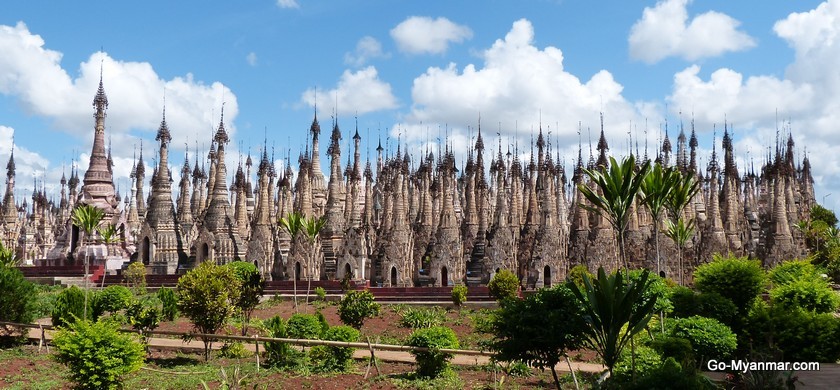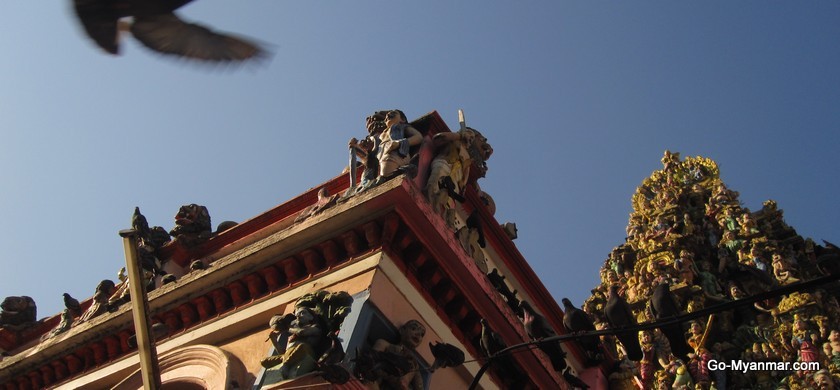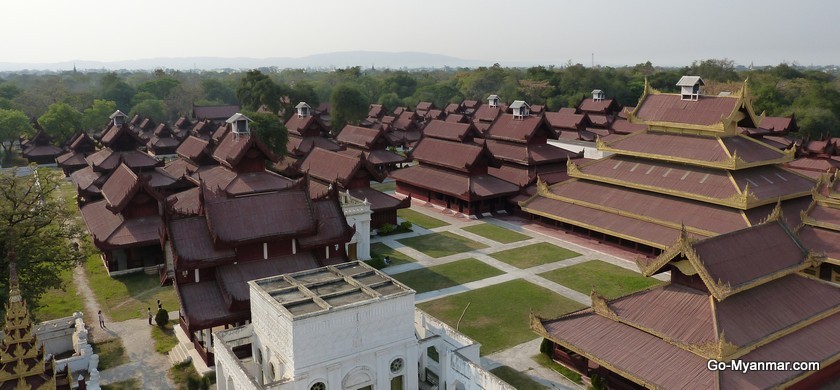Religious monuments, palaces and colonial buildings
The theme of renewal looms large in Myanmar culture – as can be seen in the large number of capital cities the country has had over the centuries – so traditional forms of architecture have not always stood the test of time.
A (massive) exception to this are the Buddhist temples and pagodas that can be found in every corner of Myanmar. The sheer number of them – leading Myanmar to be called ‘the land of a million pagodas’ – leave visitors in no doubt as to the deep religious tradition and devotion of Myanmar’s people.

The gigantic golden monument to Buddhism, the Shwedagon Pagoda, and the thousands of temples on the plains of Bagan are perhaps the most breathtaking and famous examples, but they can be found in almost every village, and on every street corner, road or riverbank throughout most of central Myanmar (less so in the mountainous and predominantly Christian regions, such as Chin and Kachin states).
The bigger pagodas are usually free to be explored, although you may sometimes have to find a local with a key to unlock the door – remember to always take off your shoes when entering. Pagodas also are often referred to as zedis, payas or stupas but whatever word is used, they are all mound-like structures that are used as places of worship and contain Buddhist relics.

Some visitors to Myanmar refer to 'pagoda fatigue' after having been taken to one too many religious sites. But the truth is that this is all down to the quality of guiding; the presence of these structures across the landscape is without doubt one the most enchanting aspects of travel in Myanmar, but of of course it gets a bit monotonous if you are taken to too many of them by an inexperienced guide!
Monasteries and other temples can also usually be visited, allowing travellers to witness something of the traditional lives of monks and nuns in Myanmar – but these visits can sometimes only be done a pre-set times.
Royal palaces which pre-date the colonial era were often made of teak (an abundant tropical hardwood), and Myanmar’s sometimes violent history has meant that most are now dust. Recently reconstructed palaces, done with sometimes patchy attention to detail and quality, can be found at Mandalay and Shwebo.

Yangon, as the former capital of British-ruled Burma, has a fascinating array of buildings from the colonial era which are very much part of the city’s identity. An amble down The Strand riverfront, in particular, is a must. To find out more about Yangon, go here.
To find out about pagodas, temples and monasteries around the country, go to destinations.
We offer a variety of tours of Myanmar that include architechture, pagodas and ancient to modern history - find out more here.
Art traditions
Art and the arts are a cornerstone of Myanmar culture. Many fine examples of local painting, lacquerware, pottery and more can be found at markets all around the country, and Yangon has a burgeoning art scene.
The traditional Myanmar art forms are cherished and have been named ‘The Ten Flowers’. They comprise:
- Panbe (blacksmithing)
- Panbu (sculpture)
- Pantain (gold and silver smithing)
- Pantin (bronze casting)
- Pantaut (making floral designs using masonry)
- Panyan (bricklaying and masonry)
- Pantamault (stone sculpture)
- Panpoot (turning designs on a lathe)
- Panchi (painting)
- Panyun (lacquerware)
These forms are in evidence being hand-crafted on streets around the country. Furthermore, the process of hand-weaving and dyeing cotton and silk can be witnessed in the floating villages of Inle Lake and other places around Myanmar.
To find out about arts and architecture different localities, including Yangon’s growing art scene, go to destinations.







